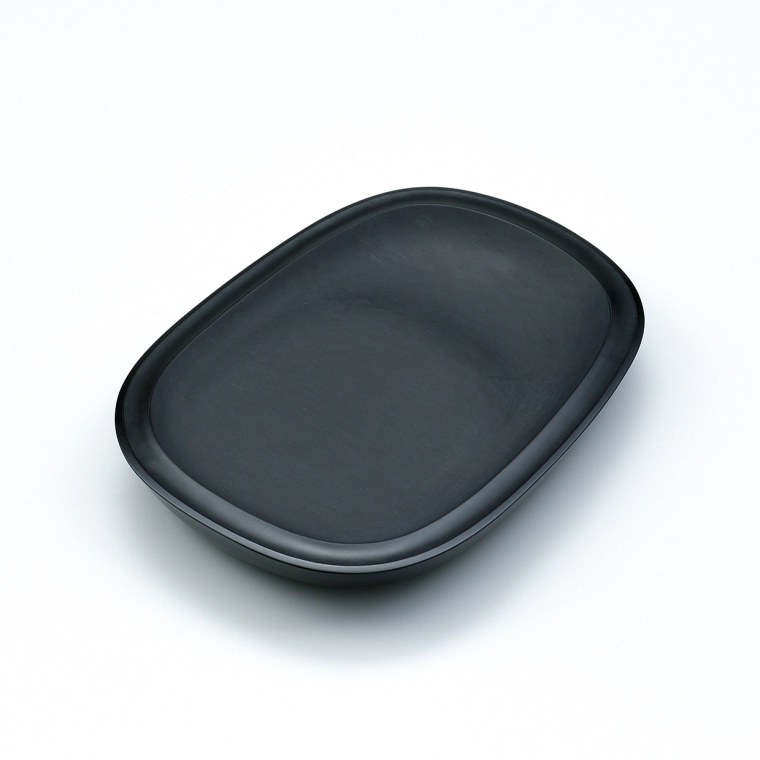“Refreshing sea” Oval inkstone
Year.2018The prices of the artworks on Gallery Japan are determined by the artists themselves and are published directly on the website.
- according to today's currency rate
- shipping fees not included
- Inkstone carving
-
Price Range
$6,000 or more
Info
The prices of the artworks on Gallery Japan are determined by the artists themselves and are published directly on the website.
close - Awards at Japan Kōgei Assoc. Exhibitions : 8
About the Artwork
By making the border line of the bokudo ( the flat surfaced part where the ink stick is rubbed on) and the bokuchi (where the liquid ink and water is stored) indistinct, the ink can be made more smoothly. At the same time, a little ocean and land space is created in the small ink stone, inflaming one's imagination. The rims that prevent the liquid ink from spilling are carved to be double-lined. Delicacy and dignity is expressed in the simple oval shape.
Description
-
CategoryInkstone carving
-
MaterialsHomei Stone (Aichi Prefecture, Horaiji Mountain)
-
Year presented2018
-
RarityUnique
Techniques Used
Inkstone carving
Inkstones are used in brush calligraphy to grind the ink for writing characters. Inkstones are highly valued writing tools, and the process of ink grinding is regarded as a calming practice preceding calligraphic activities. First, the rough shape of the inkstone is cut out of the base rock. Next, a long-handled chisel is used to cut a flat surface where the ink will be ground and a well where the ink will gather. The final form is coated with a finish of wax or lacquer. Popular varieties of stone include Amehata slate (amehataishi) from Yamanashi prefecture, akamaishi schalstein from Yamaguchi prefecture, and hōmeiseki shale and slate from Aichi prefecture.
Selected exhibitions
- The 65th Japan Traditional Kōgei Exhibition (2018)
- Selected

The prices of the artworks on Gallery Japan are determined by the artists themselves and are published directly on the website.
